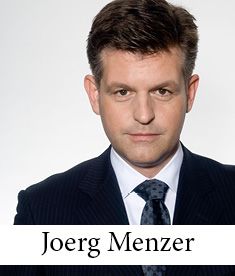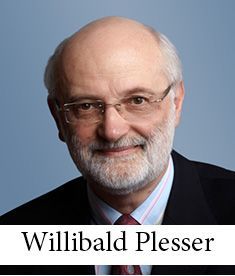It is trite these days to observe that financial crises that originate in the United States hit Europe harder and last longer than they do in the United States itself. It appears to be an equal truism that, within the varied economies of continental Europe, such crises move slowly but inexorably eastwards, with increasing depth and longevity. This is the general backdrop to the experience of the credit markets in CEE since at least 2009. In addition, political events, some related to the credit crisis and some not, have exacerbated its effects, particularly in the last 12 months, and look set to have a lasting impact into 2015 and beyond. Legal developments, too, have contributed to a sense of instability, in some cases regardless of the merits of the new rules adopted (cf. the new Czech Civil Code).
Although often spoken of as a single region, CEE is loosely divided into sub-regions that have experienced the effects of the credit crisis unevenly. Central Europe (CE), consisting of Poland, the Czech Republic, Slovakia, Slovenia and Hungary, is relatively more developed than the other sub-regions, with a consequentially greater capacity to attract FDI than the others (though political conditions in Hungary are already narrowing its earlier promise). Southern and Eastern Europe (SEE), consisting of the Western Balkans, Serbia, Croatia, Romania, and Bulgaria (the latter three fortunate enough to have achieved EU membership), offer less attractive investment environments both economically and legally. The reduction of investment and exit opportunities in these markets consequent on a more restrained credit environment has resulted in a palpable and rapid decline in transactions, with a few privatization and infrastructure projects to lighten the gloom.
The most dramatic change, though, has been in the third sub-region, the Commonwealth of Independent States (CIS) and other former-USSR countries, and is largely unrelated to the economic crisis per se. Both political events and the turnaround in US oil and gas production capacity (a political development in itself) have turned already weakening Russian growth into another example of the inherent flaws of a resource-based economy, as well as the dangers of political adventurism in an increasingly globalized world.
For banks active in the region, these macroeconomic conditions have conspired with the particular challenges of the European banking sector post-crisis to reduce lending capacity and (employable) liquidity, while at the same time increasing competition, with consequent effects on yield. The past year has been characterized by over-subscriptions for large investment-grade facilities and acquisition facilities for significant regional financial sponsors and (less so) strategic investors, with the remaining activity generally involving refinancing or covenant amendment of existing credits rather than a healthy level of mid-tier, new-money lending.
On the borrower side, CFOs of sub-investment-grade companies face less accommodating senior banks and are increasingly turning to other funding sources. We have already seen bank/bond transactions in the Czech Republic (EPE), Bulgaria (Vivacom), and Croatia (Agrokor), and this market will continue to make inroads in 2015 as the senior bank market makes its slow way to recovery and local companies improve their financial reporting and company structures to become issuers. How long before we see the first USD-denominated term loan B closed on purely CEE-based credit?
And the road ahead for senior banks appears to be very challenging indeed. Notwithstanding the attempts by national and international institutions, including the European Commission and European Central Bank, to spur economic growth in the EU and its periphery (most notably, the ECB holding interest rates well down), banks have not been entirely successful in finding creditworthy pathways to pass the benefit on to the commercial sector and contribute to regional economic growth. High leverage has made the banks risk-averse, decreasing the leverage on offer to borrowers and increasing expectations with respect to collateral packages. Projects that, even a few years ago, would have seemed viable or even attractive are not able to find the funding necessary to launch. Tightening capital requirements have coincided with a rise in NPLs and a battening-down of bank balance sheets in a low-growth/risk-aversion cycle characteristic of economic stagnation. Some observers have expressed the view that NPLs are the single most important factor in the restriction of the credit supply in Europe, with the problem being greater the further east and south you go. These circumstances are not likely to improve in 2015.
In addition to the challenging (though variable) economic circumstances in the three sub-regions, the legal environments of CEE countries present differing challenges to creditor enforcement and value realization relative to the rest of Europe, and though some legal regimes have undergone a certain degree of updating and renewal, particularly with respect to creditors’ rights, capital flight has nevertheless occurred to jurisdictions with more settled, creditor-friendly laws.
One positive response to this in the market has been the more widespread implementation of English law in loan and inter-creditor arrangements which, although still dependent on local rules with respect to the enforcement of security, nevertheless often provides a greater degree of flexibility and reliability than local law. In addition, we have seen creditors to distressed credits resorting to UK schemes of arrangement as an alternative to piecemeal enforcement or local bankruptcy regimes, to achieve positive (from the point of view of senior banks and the companies themselves) results, using English law financing agreements as the jurisdictional “hook” on which the competency of the High Court is hung (cf. Vivacom, Cognor). The encroachment of English law also supports the implementation of bank/bond and other complex structures with multiple and fluid investor classes, a natural accompaniment to the hunt for alternative financing by local CFOs.
We expect this shift towards English law and more complex, mixed-tranche transactions, at least for higher-value credits, to continue and have positioned ourselves accordingly. With senior, English-qualified staff across the region, we are helping banks and borrowers navigate the changing landscape and take advantage of the opportunities that all change ultimately presents.
Jonathan Weinberg, Partner, White & Case
This Article was originally published in the Special Year-End Issue of the CEE Legal Matters Magazine. If you would like to receive a hard copy of the magazine, you can subscribe here.







